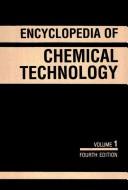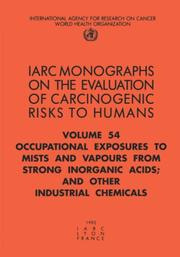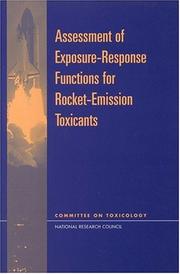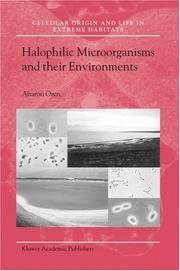| Listing 1 - 10 of 10 |
Sort by
|
Book
Year: 1964 Publisher: Bruxelles : Solvay & Cie,
Abstract | Keywords | Export | Availability | Bookmark
 Loading...
Loading...Choose an application
- Reference Manager
- EndNote
- RefWorks (Direct export to RefWorks)
Décapage. --- Chlorhydrique, Acide. --- Metals --- Hydrochloric acid. --- Pickling.
Book
Year: 1984 Publisher: Berlin : Deutscher Ausschuss für Stahlbeton,
Abstract | Keywords | Export | Availability | Bookmark
 Loading...
Loading...Choose an application
- Reference Manager
- EndNote
- RefWorks (Direct export to RefWorks)
Reinforced concrete. --- Thermal degradation --- Hydrochloric acid
Book
Year: 1909 Publisher: Paris : O. Doin et Fils,
Abstract | Keywords | Export | Availability | Bookmark
 Loading...
Loading...Choose an application
- Reference Manager
- EndNote
- RefWorks (Direct export to RefWorks)
Chemical industry --- Industries chimiques. --- Sulfuric acid. --- Acide sulfurique. --- Hydrochloric acid --- Nitric acid --- Nitrique, Acide.
Book
Year: 1992 Publisher: [Place of publication not identified] World Health Organization International Agency for Research on Cancer
Abstract | Keywords | Export | Availability | Bookmark
 Loading...
Loading...Choose an application
- Reference Manager
- EndNote
- RefWorks (Direct export to RefWorks)
Hydrochloric Acid --- Carcinogens --- Gases --- Occupational Exposure --- Sulfuric Acids --- Chlorine Compounds --- Inorganic Chemicals --- Acids, Noncarboxylic --- Sulfur Acids --- Environmental Exposure --- Noxae --- Toxic Actions --- Acids --- Environmental Pollution --- Sulfur Compounds --- Public Health --- Chemical Actions and Uses --- Organic Chemicals --- Environment and Public Health --- Health Care --- Hydrochloric Acid. --- Carcinogens. --- Gases. --- Occupational Exposure. --- Sulfuric Acids. --- Chlorine Compounds. --- Inorganic Chemicals. --- Acids, Noncarboxylic. --- Sulfur Acids. --- Environmental Exposure. --- Noxae. --- Toxic Actions. --- Acids. --- Environmental Pollution. --- Sulfur Compounds. --- Public Health. --- Chemical Actions and Uses. --- Organic Chemicals. --- Environment and Public Health. --- Delivery of Health Care.

ISBN: 0471526827 Year: 1994 Volume: vol index to 9-12 Publisher: New York ; Chichester ; Brisbane John Wiley
Abstract | Keywords | Export | Availability | Bookmark
 Loading...
Loading...Choose an application
- Reference Manager
- EndNote
- RefWorks (Direct export to RefWorks)
Chemistry [Technical ] --- Encyclopedias --- Chemical technologies --- Chemistry, Technical. --- ENCYCLOPEDIAS --- Chemical technology --- Industrial chemistry --- Technical chemistry --- Chemistry --- Technology --- Chemical engineering --- Monograph --- Alloys --- Fibers. --- Holography. --- Hydrides. --- Hydrocarbons. --- Hydrogen. --- Oxidation. --- Hormones. --- Hormones --- Carboxylic acids, hydroxy --- Herbicides --- Histamine --- Histamine antagonists --- Hydantoins --- Hydraulic fluids --- Hydrazines --- Hydroboration --- Hydrochloric acid --- Hydrogen peroxide --- Hypnotics and sedatives --- Noble gases --- Phenols, dihydric --- Plastics --- Polysaccharides --- Pressure

ISBN: 9283212541 Year: 1992 Publisher: Lyon International Agency for Research on Cancer
Abstract | Keywords | Export | Availability | Bookmark
 Loading...
Loading...Choose an application
- Reference Manager
- EndNote
- RefWorks (Direct export to RefWorks)
Oncology. Neoplasms --- Toxicology --- Carcinogens. --- Gases --- Hydrochloric Acid --- Occupational Exposure --- Sulfuric Acids --- Oncogens --- Tumor Initiators --- Tumor Promoters --- Initiators, Tumor --- Promoters, Tumor --- Benzidines --- adverse effects. --- poisoning. --- Conferences - Meetings --- Carcinogen --- Oncogen --- Tumor Initiator --- Tumor Promoter --- Initiator, Tumor --- Promoter, Tumor --- Carcinogens --- adverse effects --- poisoning --- NEOPLASMS --- RISK FACTORS --- OCCUPATIONAL EXPOSURE --- ACIDS --- HAZARDOUS SUBSTANCES --- INDUSTRY --- WORLD HEALTH ORGANIZATION --- ETIOLOGY
Book
ISBN: 9400798830 9400755384 9400755392 1283936216 Year: 2012 Publisher: New York : Springer,
Abstract | Keywords | Export | Availability | Bookmark
 Loading...
Loading...Choose an application
- Reference Manager
- EndNote
- RefWorks (Direct export to RefWorks)
Saline environments are one of the most plentiful and interesting types of habitats on Earth and are often considered as models for potential life on other planets or moons. The hypersaline playas, sabkhas, salterns, lakes, soils and even crystals often contain biomass that is far in excess of what might be predicted from the environmental conditions alone. The populations become so dense they color the brines and have been noticed by humanity since 2500 BC. In addition much of planet Earth is underlain by vast ancient salt deposits that may be thousands of meters thick and stretch for many kilometers. Even deep within the Earth’s crust there are vast reservoirs of saline water all of which contain salt loving microbes. These are not however simple terminal ecosystems. These saline habitats literally team with a complex web of life containing large populations of salt loving bacteria, archaea, algae, viruses and even fungi. Halophilic microorganisms are one of the more fascinating microbial groups known today. Their ability to exist in exceptionally high salt (as NaCl) brines, soils and even in ancient halite provides a wide array of areas for physiological, ecological and molecular studies. Whenever media reports present something on salt loving microbes there is intense public interest and fascination. The scientists that begin to study halophiles never stop. This book is an update of one originally published in 1992. Many of the topics covered are the same but others are new and reflect more modern approaches. This book is not a series of reviews of topics. It is more than that.
Adaptation, Physiological. --- Halobacteriales -- physiology. --- Halomonadaceae -- physiology. --- Halophilic microorganisms. --- Halophilic microorganisms --- Environmental Microbiology --- Chlorides --- Biological Science Disciplines --- Sodium Compounds --- Organisms --- Microbiology --- Public Health --- Inorganic Chemicals --- Natural Science Disciplines --- Hydrochloric Acid --- Chemicals and Drugs --- Chlorine Compounds --- Disciplines and Occupations --- Biology --- Environment and Public Health --- Health Care --- Water Microbiology --- Physiology --- Sodium Chloride --- Archaea --- Health & Biological Sciences --- Microbiology & Immunology --- Micro-organisms, Halophilic --- Medicine. --- Life sciences. --- Microbial ecology. --- Microbiology. --- Biomedicine. --- Biomedicine general. --- Life Sciences, general. --- Microbial Ecology. --- Halophilic organisms --- Microorganisms --- Environmental microbiology --- Ecology --- Microbial biology --- Biosciences --- Sciences, Life --- Science --- Clinical sciences --- Medical profession --- Human biology --- Life sciences --- Medical sciences --- Pathology --- Physicians --- Health Workforce --- Biomedicine, general.

ISBN: 030906144X 9786610186501 128018650X 0309592135 0585020981 9780585020983 9780309061445 0309173841 Year: 1998 Publisher: Washington, D.C. : National Academy Press,
Abstract | Keywords | Export | Availability | Bookmark
 Loading...
Loading...Choose an application
- Reference Manager
- EndNote
- RefWorks (Direct export to RefWorks)
MEDICAL --- Toxicology --- Rockets (Aeronautics) --- Hydrogen chloride --- Nitrogen dioxide --- Risk --- Epidemiologic Measurements --- Nitrogen Oxides --- Pharmacological Phenomena --- Risk Management --- Environmental Pollutants --- Environmental Pollution --- Acids, Noncarboxylic --- Chlorine Compounds --- Gases --- Public Health --- Probability --- Inorganic Chemicals --- Oxides --- Physiological Phenomena --- Organization and Administration --- Toxic Actions --- Nitrogen Compounds --- Acids --- Phenomena and Processes --- Chemicals and Drugs --- Health Services Administration --- Statistics as Topic --- Environment and Public Health --- Oxygen Compounds --- Chemical Actions and Uses --- Epidemiologic Methods --- Health Care Evaluation Mechanisms --- Health Care --- Quality of Health Care --- Investigative Techniques --- Analytical, Diagnostic and Therapeutic Techniques and Equipment --- Health Care Quality, Access, and Evaluation --- Dose-Response Relationship, Drug --- Nitrogen Dioxide --- Risk Assessment --- Air Pollutants --- Environmental Exposure --- Hydrochloric Acid --- Health & Biological Sciences --- Toxicology & Public Health --- Fuel --- Dose-response relationship --- Toxicology. --- Dose-response relationship. --- Chloride gas --- Hydrogen chloride gas --- Poisons --- Aerial rockets --- Nitrogen oxides --- Chlorides --- Dose-response relationship (Biochemistry) --- Flying-machines --- High-speed aeronautics --- Projectiles --- Rocketry --- Interplanetary voyages --- Jet propulsion --- Rocket engines

ISBN: 1280551097 9786610551095 0306480530 1402008295 Year: 2002 Publisher: Dordrecht, the Netherlands ; Boston, Massachusetts : Kluwer Academic Publishers,
Abstract | Keywords | Export | Availability | Bookmark
 Loading...
Loading...Choose an application
- Reference Manager
- EndNote
- RefWorks (Direct export to RefWorks)
"This water" he told me, "runs out to the eastern region, and flows into the Arabah; and when it comes into the sea, into the sea of foul waters [i. e. , the Dead Sea], the water will become wholesome. Every living creature that swarms will be able to live wherever this stream goes; the fish will be very abundant once these waters have reached there. It will be wholesome, and everything will live wherever this stream goes. Fishermen shall stand beside it all the way from En-gedi to En-eglaim; it shall be a place for drying nets; and the fish will be of various kinds [and] most plentiful, like the fish of the Great Sea. " Ezekiel’s prophecy (Ezekiel 47: 8-10) for revival and purification of the Dead Sea waters This new book on "Halophilic Microorganisms and their Environments" is the fifth volume in the COLE series (Cellular Origin and Life in Extreme Habitats (see: http://www. wkap. nl/prod/s/COLE). In the previous books we covered aspects of enigmatic microorganisms, microbial diversity, astrobiology, and symbiosis, so this book on halophilic microbes adds a fitting link to the rest of series' books. Since ancient times hypersaline habitats have been considered extreme environments, and some were thought not to sustain life at all. Yet, every organism requires salt for its existence. Salty places have been compared to an environment of extinction (e. g. , the Dead Sea).
Organisms --- Adaptation, Biological --- Environmental Microbiology --- Sodium Compounds --- Physiological Processes --- Euryarchaeota --- Chlorides --- Hydrochloric Acid --- Public Health --- Physiological Phenomena --- Microbiology --- Biological Processes --- Archaea --- Inorganic Chemicals --- Chlorine Compounds --- Chemicals and Drugs --- Biology --- Phenomena and Processes --- Biological Phenomena --- Environment and Public Health --- Biological Science Disciplines --- Health Care --- Natural Science Disciplines --- Disciplines and Occupations --- Water Microbiology --- Sodium Chloride --- Adaptation, Physiological --- Bacteria --- Halobacteriales --- Health & Biological Sciences --- Microbiology & Immunology --- Microbial ecology. --- Nature conservation. --- Geochemistry. --- Aquatic ecology . --- Biochemistry. --- Microbial Ecology. --- Nature Conservation. --- Freshwater & Marine Ecology. --- Biochemistry, general. --- Biological chemistry --- Chemical composition of organisms --- Physiological chemistry --- Chemistry --- Medical sciences --- Aquatic biology --- Ecology --- Chemical composition of the earth --- Chemical geology --- Geological chemistry --- Geology, Chemical --- Earth sciences --- Conservation of nature --- Nature --- Nature protection --- Protection of nature --- Conservation of natural resources --- Applied ecology --- Conservation biology --- Endangered ecosystems --- Natural areas --- Environmental microbiology --- Microorganisms --- Composition --- Conservation --- Halophilic microorganisms. --- Micro-organisms, Halophilic --- Halophilic organisms
Book
Year: 2021 Publisher: Basel, Switzerland MDPI - Multidisciplinary Digital Publishing Institute
Abstract | Keywords | Export | Availability | Bookmark
 Loading...
Loading...Choose an application
- Reference Manager
- EndNote
- RefWorks (Direct export to RefWorks)
This is a Special Issue of Metals devoted to aspects of Advances in Mineral Processing and Hydrometallurgy. This includes a global call for article submissions that also included Characterization along with Recycling and Waste Minimization. As such, both primary and recycled aspects will be considered. Possible specific topics included Mineralogy, Geometallurgy, Thermodynamics, Kinetics, Comminution, Classification, Physical Separations, Liquid–Solid Separations, Leaching, Solvent Extraction, Ion Exchange, Activated Carbon, Precipitation, Reduction, Process Economics and Process Control. Suggested application areas were in Gold, Silver, PGM’s, Aluminum, Copper, Zinc, Lead, Nickel, and Titanium. Critical Metals articles on topics such as Lithium, Antimony Tellurium, Gallium, Germanium, Cobalt, Graphite, Indium, and Rare Earth were also welcome. As such, this Special Issue of Metals was well supported by diverse submissions and the final publication of high-quality peer-reviewed articles.
Technology: general issues --- BOS filter cakes --- butyric acid --- selective leaching --- leaching behaviors --- zinc --- iron --- chalcocite --- sulphide leaching --- copper --- reusing water --- desalination residue --- ecological treatment --- leaching --- black copper ore --- copper wad --- copper pitch --- comminution --- grinding circuit --- Swebrec function --- size distribution models --- modelling --- lateritic ore --- iron and steelmaking wastes --- alkalis --- aqueous treatment --- waste treatment --- reducing agent --- manganese --- viscoelasticity --- quartz --- kaolin --- seawater --- magnesium precipitates --- chalcopyrite concentrate --- hydrogen peroxide --- sulfuric acid --- leaching kinetics --- copper tailings --- rheology --- fractal aggregates --- thickening --- MnO2 --- acid media --- ANOVA --- dissolution --- arsenic --- trisulfide --- copper sulfate --- kinetics --- shrinking core model --- time-to-a-given-fraction kinetics analysis --- silica recovery --- column flotation --- mining waste --- waste reprocessing --- CuFeS2 --- chloride media --- manganese nodules --- thiosulfate --- gold leaching --- silver leaching --- kinetic analysis --- sedimentary ore --- diffusion control --- mixed control --- chalcopyrite --- ionic liquid --- bromide --- seawater flotation --- pyrite depression --- guar gum --- FBRM --- clay-based copper tailings --- fractal dimension --- mixing intensity --- population balance model --- seawater flocculation --- platinum-group metal --- metal precipitation --- ion-pair --- aliphatic primary amine --- hydrochloric acid --- enhanced flocculation --- water recovering --- magnesium removal --- shredded waste printed circuit boards --- precious metals --- bromine --- platinum group elements --- catalytic converters --- acidic fusion --- acidic leaching --- sulfation --- nitrate --- gas scrubbing --- recovery --- gold --- refractory --- nitric acid --- microwave --- coal fly ash --- sandy grade alumina --- AlCl3·6H2O --- crystallization --- salting-out method --- gibbsite --- precipitation --- electric arc furnace dust --- monosodium glutamate --- ammonia leaching --- high-pressure leaching --- copper extraction --- silver extraction --- desilication --- malachite --- carbonate --- ammonium hydroxide --- heterogeneous model --- rare earth elements --- NdFeB permanent magnet --- hydrometallurgical --- electrodialysis (ED) --- lithium --- lithium-ion battery --- lithium sulfate --- multistage concentration (MSC) --- gold cyanide leaching --- sulfide minerals --- SART process --- cyanidation --- activated carbon --- metal-cyanide complex --- copper ore --- carbon in pulp (CIP), agitated tank --- cyanide complexes
| Listing 1 - 10 of 10 |
Sort by
|

 Search
Search Feedback
Feedback About UniCat
About UniCat  Help
Help News
News